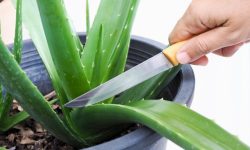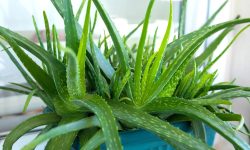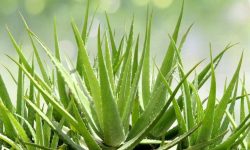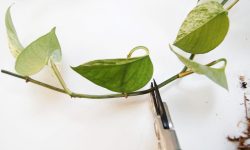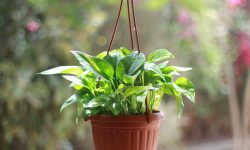Aloe vera is one of the most resilient houseplants, yet it thrives best when its natural needs are understood and respected. Many people grow aloe for its soothing gel, but few realize how much stronger and more beautiful the plant becomes with proper care. When aloe receives the right balance of light, water, and soil, its leaves grow firm, bright, and full of moisture. The plant develops a strong base that supports long-term health and steady growth. Caring for aloe is simple, but each step matters. Every small detail affects the way it absorbs energy, stores water, and responds to its environment.
Watching aloe vera flourish is deeply rewarding because the plant shows clear signs when it is happy. Leaves stand tall, pups appear at the base, and the color deepens into a rich green. Aloe becomes more than a decorative plant. It becomes a living companion that responds to thoughtful care. When you understand what aloe needs, you can guide its growth for many years. Proper care helps the plant resist stress, adapt to seasonal changes, and remain vibrant in any home. Learning the right approach turns aloe into a healthy, long-lasting feature that brings natural beauty to your space.
Understanding Aloe Vera’s Natural Growth Needs

Aloe vera grows according to rhythms shaped by its desert origins, which means it thrives when its environment mimics warm, dry landscapes. The plant stores water in its leaves, allowing it to survive long periods without moisture. This storage system helps the leaves grow firm and thick when conditions are correct. New leaves emerge from the center of the rosette, pushing older leaves outward as the plant expands. When aloe receives stable warmth, bright indirect light, and well-draining soil, this natural cycle continues without interruption. Understanding this rhythm helps you care for the plant with confidence.
The root system also plays a major role in aloe’s health. Aloe roots prefer airy soil that dries quickly and allows oxygen to flow freely. Heavy or compact soil traps moisture and slows the roots, weakening the plant over time. When the roots have space to spread, they anchor the plant more firmly and support taller, thicker leaves. Healthy roots create a strong foundation that fuels long-term growth. If the soil remains wet for too long, the leaves lose firmness and the base may soften. Recognizing these early signals helps you adjust the environment before problems worsen.
Light is another essential factor in aloe vera’s natural growth pattern. In bright light, the plant grows compact with rich color and strong posture. Without enough light, the leaves become thin and stretch toward the nearest window. This stretching weakens the overall structure and slows the plant’s ability to produce new leaves. Aloes placed in steady, bright areas grow faster, maintain firmer leaves, and develop a broader shape. Watching how the plant responds to light and soil gives you clear clues about its needs. When these conditions stay balanced, aloe vera thrives, grows stronger, and remains healthy for many years.
Choosing the Right Location for Healthy Aloe Growth
Choosing the proper location is essential for keeping aloe vera healthy and vibrant. The plant thrives in bright, indirect sunlight that provides enough energy for strong leaf development. Placing aloe near an east- or south-facing window often creates the ideal balance. Here, the plant receives steady brightness without prolonged heat. When aloe sits in a dim area, it begins to stretch toward the light, creating long, thin leaves that lack firmness. This stretching weakens the plant’s structure and slows overall growth. A well-lit location supports compact, sturdy leaves that reflect the plant’s natural rhythm.
Temperature also influences aloe’s long-term health. Aloe vera prefers warm indoor conditions that stay above 20°C. The plant reacts slowly in cooler rooms, reducing leaf growth and energy production. Sudden temperature changes can also stress the leaves, causing them to droop or lose color. Keeping aloe away from cold drafts or heating vents prevents the plant from facing unnecessary strain. When the temperature remains stable, aloe focuses its energy on producing new leaves and strengthening its base. A warm, consistent environment encourages lasting growth.
Airflow contributes to the plant’s comfort as well. Aloe does not need high humidity and actually thrives in drier air. Placing the plant in a room with natural air movement helps prevent moisture buildup around the leaves. However, the airflow should not be harsh or direct. Strong drafts may cause the leaves to dry unevenly. A gentle, balanced environment keeps aloe calm and encourages natural growth patterns. Choosing the right location with proper light, warmth, and airflow gives the plant everything it needs to stay strong, healthy, and long lasting.
Preparing the Ideal Soil Mix for Long-Lasting Aloe Health
Aloe vera depends on the right soil structure to grow with strength and resilience. Because it comes from dry regions, the plant thrives in soil that drains quickly and allows air to reach the roots. A loose, gritty mix helps prevent moisture from lingering around the base, where rot can develop. Succulent or cactus soil blends mimic aloe’s natural environment by encouraging fast drainage and maintaining a light texture. When the soil stays dry between waterings, the roots expand more confidently. This expansion supports thicker leaves and a more balanced growth pattern over time.
The composition of the soil also plays a major role in long-term health. Adding coarse sand or perlite increases airflow and keeps the mix from compacting. Compact soil restricts root movement and traps water, creating stress that slows development. A well-structured mix ensures the plant absorbs moisture only when needed. This balance reduces the risk of fungal issues and encourages deeper rooting. Aloe grows best when the soil dries thoroughly before being watered again. Proper soil preparation allows the plant to maintain a strong foundation that supports years of steady growth.
The pot you choose works together with the soil to create the right environment. Containers with drainage holes release excess water and help the soil stay breathable. Clay pots are especially effective because they allow moisture to evaporate through their walls. This evaporation prevents the soil from staying damp for too long. Before planting, lightly moisten the soil so it settles without becoming wet. This gentle step helps aloe adjust quickly to its new home. When both soil and pot support dryness and airflow, aloe vera develops healthier roots, firmer leaves, and long-lasting strength.
Watering Aloe Vera Properly for Long-Lasting Strength
Watering aloe vera correctly is essential for maintaining strong roots and firm, healthy leaves. Because aloe is naturally adapted to dry climates, it thrives with deep but infrequent watering. The soil must dry almost completely between waterings to prevent stress. When the surface and deeper layers feel dry, water thoroughly until moisture drains out of the bottom. This technique encourages the roots to grow downward in search of water, which strengthens the plant’s foundation. Giving aloe small, frequent sips weakens its natural rhythm and leads to softer leaves over time.
Seasonal changes also affect how much water aloe vera needs. During warm months, the plant grows actively and uses more moisture. The soil dries faster, and the plant may need slightly more frequent watering. In cooler months, aloe slows its growth and retains water longer. Watering during these inactive periods should be reduced to avoid root problems. Overwatering in winter is one of the most common causes of aloe decline. Understanding these seasonal shifts helps you make better decisions and maintain a stable watering routine that protects the plant year-round.
Observing the plant’s leaves gives clear clues about its hydration needs. Firm, plump leaves indicate a healthy moisture balance, while thin or wrinkled leaves suggest the plant needs water. In contrast, soft or yellowing leaves often signal excess moisture. Adjusting your watering habits based on these signs helps aloe maintain steady growth. Always water the soil directly and avoid letting water sit on the leaves or in the crown. Proper watering allows aloe vera to grow stronger, maintain deep color, and stay resilient for many years.
Providing the Right Light Conditions for Strong Aloe Development
Light is one of the most important factors in aloe vera care, shaping the plant’s structure, color, and overall strength. Aloe thrives in bright, indirect sunlight where it receives steady energy throughout the day. When placed in a well-lit location, the leaves remain thick and upright, and the plant develops a firm, compact shape. Without enough light, aloe stretches toward the nearest window, creating long, weak leaves that lack resilience. This stretching also slows new leaf production. A bright windowsill with filtered sun provides the ideal environment, helping aloe maintain its natural rhythm.
Direct sunlight must be handled carefully. While aloe can tolerate some strong light, intense afternoon sun may cause leaf tips to dry or create pale patches. This is especially true for younger plants or recently repotted aloe that still needs time to stabilize. If your plant receives harsh sunlight, shifting it slightly back from the window or using a sheer curtain can protect the leaves. Consistent exposure to bright but soft light encourages aloe to grow wider rather than taller, developing thicker leaves and stronger roots. This balance ensures long-lasting health.
Consistency is essential for stable growth. Aloe vera benefits from receiving similar amounts of light each day. Moving the plant too often confuses its growth direction and leads to uneven development. If your home lacks strong natural light, a gentle grow light can supplement brightness. Position the light a short distance above the plant and keep it on for several hours daily. When aloe gets the right light consistently, it forms deep color, firm leaves, and a strong central core. Ideal lighting becomes the foundation for steady, long-term growth.
Feeding Aloe Vera for Steady, Balanced Growth
Aloe vera benefits from light, thoughtful feeding that supports its natural rhythm without overwhelming its delicate root system. Because aloe stores both water and nutrients inside its leaves, it reacts poorly to strong fertilizers or frequent feeding. A diluted succulent fertilizer, applied only during warm months, provides the gentle nourishment the plant can use efficiently. This mild boost strengthens new leaf formation and helps the plant maintain a firm, upright posture. When aloe receives nutrients in small amounts, its color deepens, and the base becomes broader, showing steady internal strength. The key is restraint, because aloe grows best with minimal supplementation.
Matching feeding to seasonal changes is essential for long-term success. Aloe vera enters an active growth phase during spring and summer, so this is the ideal period for gentle feeding every four to six weeks. The plant absorbs nutrients more effectively in warm conditions when photosynthesis is stronger and the soil dries at a steady pace. During fall and winter, aloe slows its natural processes. Feeding during this resting period disrupts its balance. Cold soil also reduces nutrient uptake, which can stress the roots. Allowing the plant to rest without fertilizer helps maintain its energy and prepares it for the next active season.
Careful observation helps you identify whether your aloe needs additional support. When nutrients are balanced, the leaves appear firm, richer in color, and evenly shaped. New growth emerges steadily from the center, and pups may form around the base. Signs of overfeeding include leaf tip burn, soft spots, or sudden color fading. If these signs appear, pause all feeding and water lightly to flush the soil over time. Consistent, gentle fertilizing strengthens aloe’s core without interrupting its natural rhythm. This balanced approach keeps the plant healthy, stable, and vibrant for many years, supporting long-lasting growth.
Repotting Aloe Vera to Maintain Long-Term Health
Repotting aloe vera at the right time helps the plant maintain steady growth and prevents stress caused by crowded roots. As aloe matures, its roots gradually fill the pot and restrict movement. When the roots become tight, the plant slows its growth and may develop thinner leaves. Repotting provides fresh space for the roots to expand, which encourages stronger leaf production. A pot that is only one size larger creates the perfect balance. Too much space holds excess moisture, while a slightly bigger pot supports natural development. Fresh soil also improves aeration and resets the plant’s growing environment.
The repotting process should be gentle to protect the root system. Begin by removing the aloe from its pot and brushing away loose soil. Inspect the roots for firmness. Healthy roots appear light in color and feel solid. Any soft or dark sections should be trimmed to prevent future problems. Place the plant into new, well-draining soil and position the crown slightly above the surface to protect it from trapped moisture. Press the soil lightly to secure the plant without compacting it. This careful placement helps the aloe adjust more comfortably to its new home.
After repotting, aloe vera needs a short resting period. Avoid watering for several days so small cuts on the roots can dry and form a protective layer. Place the plant in bright indirect light during this time to reduce stress. Once the plant settles, resume light watering and regular care. Over the next few weeks, you may notice firmer leaves and healthier color as the roots begin to function again. Repotting every one to two years supports long-term strength and ensures the plant continues to grow with stability and resilience.
Managing Aloe Vera Pups to Support Stronger Mother Plant Growth
Aloe vera naturally produces pups as it matures, and these offsets are signs of a healthy, well-established plant. However, too many pups growing in the same pot quickly reduce the available space for root expansion. When roots become crowded, the mother plant loses access to essential nutrients and water, slowing its growth and weakening leaf structure. Leaves may appear thinner or softer, and new growth may develop more slowly. Managing pups allows the mother plant to maintain its strength by redirecting energy toward thicker, firmer leaves. This process also protects the plant from stress caused by overcrowding and poor airflow.
The ideal time to remove pups is when they show a firm base and small but stable roots. A pup that can stand on its own usually has enough strength to survive separation. Gently loosening the soil helps avoid damaging the mother plant’s root system. Lifting or cutting the pup carefully allows both plants to stay healthy. Removing pups improves airflow around the base, reducing moisture buildup and lowering the risk of fungal issues. With more space, the mother plant can grow new leaves from the center with greater stability. Its shape becomes wider, healthier, and more balanced.
Separating pups also benefits the offsets themselves. When given their own pots, pups develop stronger roots and adapt more quickly to their environment. They no longer compete for nutrients, water, or light, so their leaves thicken sooner. A well-rooted pup can eventually grow into a new mature plant capable of producing its own offsets. For the mother plant, pup management prevents long-term strain and encourages steady growth year after year. This simple practice ensures both the original plant and its pups thrive with bright color, firm leaves, and lasting vitality.
Seasonal Care for Aloe Vera Throughout the Year
Spring Care for Renewed Aloe Growth
Spring is the season when aloe vera wakes up from its winter slowdown and begins rebuilding energy for the year ahead. As temperatures warm, the plant slowly increases its metabolic activity and starts producing new leaves from the center. During this time, aloe responds strongly to improved light levels. Gradually increasing sun exposure strengthens the leaves, deepens color, and helps the plant regain firmness lost during winter. Spring is also an ideal time to repot aloe because the warmer environment speeds recovery from root disturbance. Fresh soil provides better aeration, while removing old, compacted soil prevents moisture problems.
Watering in spring should become slightly more frequent, but the soil must still dry before each session. Aloe thrives when the root zone experiences warm, airy conditions. Feeding the plant with diluted succulent fertilizer helps stimulate new leaf growth, but the dosage must remain light to avoid root sensitivity. This period is also perfect for checking pups. Offsets that developed slowly during winter may now be strong enough for separation. With consistent warmth, balanced moisture, and gentle feeding, aloe vera enters summer healthy, energized, and ready for faster growth.
Summer Care for Active, Fast-Growing Aloe
Summer is aloe vera’s strongest growth season, as long daylight hours and warm temperatures create ideal conditions for rapid leaf development. During this time, aloe absorbs more sunlight and converts it into steady growth. Placing the plant where it receives bright indirect light or morning sun increases leaf thickness and strengthens the core. However, afternoon sunlight becomes intense in many regions, so shading the plant during peak heat prevents leaf bleaching. Good airflow also stabilizes temperature around the plant and keeps the soil from overheating, which protects the roots.
Watering must be carefully balanced in summer because soil dries quickly. Deep watering followed by long drying intervals encourages aloe to build a wide, strong root system. The plant may need water more often than in spring, but only when the soil becomes fully dry. Fertilizing once or twice during the season enhances leaf color and firmness. Summer is also when pups grow fastest, so monitoring their size helps you decide when to separate them. With consistent light, proper watering, and controlled heat exposure, aloe maintains its strongest seasonal momentum and produces healthy, vigorous growth.
Fall Care for Slowing Aloe Growth
Fall brings shorter daylight hours and cooler conditions, signaling aloe vera to reduce its growth rate. As temperatures gradually drop, the plant begins storing moisture rather than producing new leaves. During this seasonal transition, you must adjust watering to match the plant’s slower rhythm. Soil remains moist longer in fall, so extending the time between watering sessions helps protect the roots from excess moisture. Reducing fertilizer is equally important because aloe cannot effectively process nutrients when entering dormancy. Overfeeding in fall risks salt buildup and root stress.
Light becomes more limited in fall, so moving the plant slightly closer to a window helps compensate for the seasonal decrease. The goal is to maintain brightness without exposing aloe to cold drafts from open windows or doors. Fall is also a time when indoor pests may appear. Warm, dry indoor environments attract mealybugs and scale insects. Regular inspection helps identify issues early. Maintaining airflow around the plant prevents dampness that encourages fungal growth. With gentle adjustments and careful monitoring, aloe remains stable and prepares for winter dormancy without stress.
Winter Care for Resting Aloe Vera
Winter is aloe vera’s resting period, when growth slows significantly and the plant focuses on conserving energy. Sunlight becomes weaker and shorter, so placing aloe in the brightest available location helps maintain leaf firmness. A warm, south-facing windowsill is often ideal, but the plant must not touch cold glass. Temperature stability is crucial in winter because aloe reacts poorly to sudden cold drafts. Rooms that stay warm and dry help the plant preserve moisture inside its leaves.
Watering must be greatly reduced during winter because aloe uses very little water when dormant. Soil should dry completely for an extended period before watering again. Even slight overwatering in cold months can lead to root rot. Fertilizing should be paused entirely because nutrient absorption slows dramatically. Some wrinkling of leaves is normal as the plant uses internal reserves, but leaves should remain generally firm. Proper winter care ensures aloe vera retains its strength and avoids cold-season damage. Once spring arrives, the plant will respond quickly with new growth and improved vigor.
Common Mistakes to Avoid When Caring for Aloe Vera
Overwatering and Poor Soil Choices
Overwatering remains the easiest mistake to make because aloe vera is naturally adapted to survive long dry periods. When the soil stays wet for too long, the roots lose the oxygen they need to function. This lack of airflow slowly damages the root system, even before any visible symptoms appear. Once the damage spreads, the leaves begin to droop, soften, or show patches of discoloration. These signs often confuse growers, leading them to believe the plant is thirsty. Adding more water pushes the plant closer to collapse. Allowing the soil to dry fully and watering only when necessary restores balance and prevents long-term stress.
Poor soil choices intensify these problems. Aloe vera requires a loose, gritty mix that allows moisture to drain quickly and air to flow freely. Dense garden soil or peat-heavy potting blends hold water for long periods and compact easily, restricting root growth. When aloe roots cannot expand, the plant becomes weak and slow to develop new leaves. Improving soil structure with perlite, coarse sand, or a specialized succulent mix supports strong roots and healthier leaf growth. The right soil ensures excess moisture escapes quickly, protecting the entire plant from hidden damage. Healthy soil is the foundation for a thriving aloe.
Incorrect Lighting and Temperature Stress
Incorrect lighting greatly affects aloe vera’s ability to grow with strength and stability. Aloe needs bright, indirect light to stay compact and firm. When the plant receives insufficient lighting, it begins to stretch toward the brightest point in the room. This stretching creates thin leaves with weak cells that bend or break easily. Over time, the aloe loses its natural shape and looks unbalanced. Excessive direct sunlight can also cause problems. Intense afternoon rays may burn the leaves, causing pale patches or dry, brittle tips. Monitoring the plant’s position throughout the year helps maintain an ideal lighting balance.
Temperature stress creates additional challenges that can disrupt aloe’s natural rhythm. The plant thrives in warm indoor environments with minimal fluctuation. Exposure to cold air slows metabolic processes, making the leaves softer and reducing new growth. Sudden drafts from windows or air conditioners may shock the plant and cause uneven leaf texture. Extreme heat also stresses aloe by pulling moisture from the leaves faster than the roots can replace it. Ensuring the plant remains in a warm, stable location helps it maintain firmness and color. When both temperature and lighting remain steady, aloe vera grows stronger, more compact, and more resilient.
Potting Errors, Pest Issues, and Excess Handling
Potting errors often happen quietly and may take months to reveal their full impact on aloe vera. Pots without drainage holes trap water in the bottom, even when the topsoil feels dry. This hidden moisture slowly damages the roots and limits oxygen flow. Oversized pots cause similar problems because the large volume of soil stays wet longer than aloe can tolerate. Choosing a pot only slightly larger than the current root system promotes healthy drying cycles. Clay pots add extra protection by allowing moisture to evaporate through the sides, keeping the soil naturally balanced.
Pest issues become more common when aloe is stressed or kept in warm indoor environments. Mealybugs and scale insects hide deep between the leaves, feeding on plant sap and weakening the structure. Infestations may start small but spread quickly if ignored. Regular inspection helps catch pests early before they cause noticeable damage. Excess handling is another overlooked mistake. Moving aloe too often disrupts its orientation toward light and causes uneven leaf growth. The plant needs time to settle in one location to maintain symmetry and internal balance. Minimizing disturbances, choosing the right pot, and monitoring pests ensure aloe vera remains stable, vibrant, and ready for long-lasting growth.
FAQs About Caring for Aloe Vera the Right Way
How often should I water aloe vera for healthy growth?
Aloe vera should be watered only when the soil is completely dry. This usually means every two to three weeks, depending on temperature, pot size, and light levels. Deep, infrequent watering encourages strong root growth and prevents moisture-related issues like root rot.
Why are my aloe vera leaves turning soft or mushy?
Soft or mushy leaves are usually caused by overwatering or soil that drains poorly. Aloe roots need airflow and long dry periods to stay healthy. When the soil stays wet, the roots rot and the leaves collapse. Switching to a gritty mix and reducing watering often helps the plant recover.
What type of light does aloe vera need indoors?
Aloe vera thrives in bright, indirect light. A spot near a south- or east-facing window provides enough brightness without exposing the plant to harsh afternoon heat. If aloe does not receive enough light, it stretches and grows thin, weak leaves.
When should I repot my aloe vera plant?
Repot aloe vera when the roots fill the pot or when pups begin crowding the soil surface. A slightly larger pot with fast-draining soil allows the roots to expand naturally. Repotting every one to two years keeps the plant strong and prevents overcrowding.
Why is my aloe vera not growing even with good care?
Slow growth often happens when aloe receives insufficient light, sits in compact soil, or experiences seasonal dormancy. Cooler temperatures and short winter days can slow activity. Ensuring warm conditions, bright light, and well-draining soil helps the plant regain steady growth.
Conclusion
Caring for aloe vera becomes simple and enjoyable when you understand its natural needs. With bright light, well-draining soil, and careful watering, the plant grows stronger, firmer, and more vibrant each season. Repotting at the right time, managing pups, and avoiding common mistakes help aloe maintain long-lasting health. The plant responds clearly to proper care, producing thicker leaves and a stable, beautiful shape. Aloe vera thrives when given a warm, consistent environment and space to grow at its own rhythm. With these practices, your aloe remains a dependable, long-living companion that brings natural beauty to your home.

